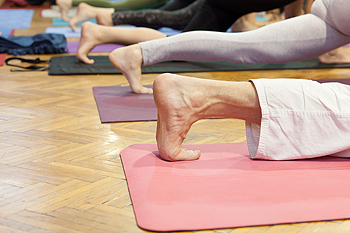
 The Achilles tendon is located at the back of the ankle and connects the heel to the calf muscles. This tendon can be stressed throughout the day and is an important part of being able to complete tasks such as jumping, running, and walking. Common injuries that can occur with the Achilles tendon include tendonitis, partial tears, and ruptures which may require medical attention. Some causes of these injuries may include starting or intensifying a sport, having tight calf muscles, and bone spurs. Due to the risks involved, and the function of the Achilles tendon, please consult with a podiatrist if you are experiencing pain or stiffness in the calf muscles in order to prevent an injury.
The Achilles tendon is located at the back of the ankle and connects the heel to the calf muscles. This tendon can be stressed throughout the day and is an important part of being able to complete tasks such as jumping, running, and walking. Common injuries that can occur with the Achilles tendon include tendonitis, partial tears, and ruptures which may require medical attention. Some causes of these injuries may include starting or intensifying a sport, having tight calf muscles, and bone spurs. Due to the risks involved, and the function of the Achilles tendon, please consult with a podiatrist if you are experiencing pain or stiffness in the calf muscles in order to prevent an injury.
Achilles tendon injuries need immediate attention to avoid future complications. If you have any concerns, contact Dr. Harris L. Klear of Burlington County Podiatry Associates. Our doctor can provide the care you need to keep you pain-free and on your feet.
What Is the Achilles Tendon?
The Achilles tendon is a tendon that connects the lower leg muscles and calf to the heel of the foot. It is the strongest tendon in the human body and is essential for making movement possible. Because this tendon is such an integral part of the body, any injuries to it can create immense difficulties and should immediately be presented to a doctor.
What Are the Symptoms of an Achilles Tendon Injury?
There are various types of injuries that can affect the Achilles tendon. The two most common injuries are Achilles tendinitis and ruptures of the tendon.
Achilles Tendinitis Symptoms
Rupture Symptoms
Treatment and Prevention
Achilles tendon injuries are diagnosed by a thorough physical evaluation, which can include an MRI. Treatment involves rest, physical therapy, and in some cases, surgery. However, various preventative measures can be taken to avoid these injuries, such as:
If you have any questions please feel free to contact one of our offices located in Marlton and Delran, NJ . We offer the newest diagnostic tools and technology to treat your foot and ankle needs.